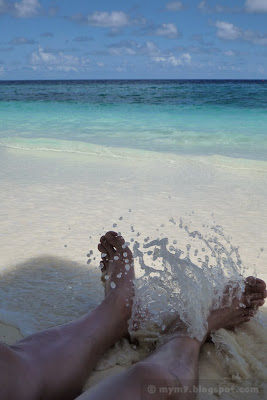It is an attractive proposition to have high quality optics mounted on a small camera body like the recent MFT models such as Panasonic GF-1 or Olympus EP-L1. But does it really work? Here, I test a few M-mount lenses that I have on the EP-L1 just to see how they work when used on an MFT body, at twice the intended focal length. I choose the EP-L1 (rather than the EP-1) because it renders a little sharper JPGs than its bigger brother, EP-1. It's also a little easier to operate the EP-L1 in manual focus than it does on the EP-1. The two lens, ZM Planar 50/f2 and Noctilux f1, have been selected to compare their characteristics both on a MFT and a full frame bodies. To be clear, I'm not looking at them from the price point, my only intention is to illustrate how they render the photos from different camera formats. I will not do the 100% crop either because it's too much work for an amateur like me. There's plenty of that already posted if you google a bit. (Please excuse the changing lights as I don't own a studio!)
Noctilux on EP-L1 @ f1.0 (100mm Equiv.)
Noctilux on M9 @ f1.0 (50mm Equiv.)
At the widest aperture, the Noctilux f1 produces pleasing result on a MFT format. Its softness, a well documented character of the Noct at f1.0, can be seen in both photos. Only when used on a full frame, the Noctilux produces its signature swirly bokeh.
________________________________________________
Noctilux on EP-L1 @ f1.4
Noctilux on M9 @ f1.4
Stopping the Noctilux down one stop to f1.4, it sharpens up slightly but still maintains a pleasing soft background on a MFT format. On a full frame, its bokeh remains creamy and unique.
________________________________________________
Noctilux on EP-L1 @ f2.0
ZM Planar on EP-L1 @ f2.0
Noctilux on M9 @ f2.0
ZM Planar on M9 @f2.0
At f2.0, I also test the ZM Planar 50/f2. On a MFT body, the Zeiss really excels in sharpness and it's not just in the center. The Noctilux, sharpens up from f1.4, but it is still slightly softer compare to more modern lens. Examining a shaded area of the two photos, the ZM Planar yields higher contrast than the Noctilux does. For the bokeh, the ZM Planar isn't quite as soft as the Noctilux, but is still very pleasing. But again, we're talking about a $700 lens versus a nice used car.
On a full frame, both lens perform extremely well, producing sharp images with different bokeh renderings. (I didn't quite nail the focus on the Noctilux, it seems.) Because the ZM Planar is shot at its maximum aperture, it still produces a slight swirl in the bokeh even at f2.0.
________________________________________________
Noctilux on EP-L1 @ f2.8
ZM Planar on EP-L1 @ f2.8
Noctilux on M9 @ f2.8
ZM Planar on M9 @ f2.8
At f2.8 on a MFT body as 100mm, the ZM Planar appears to be slightly sharper than the Noctilux. Using them at 50mm on a full frame, they're equally sharp. At this aperture, the bokeh differs less between the two lenses. Looking closely, the ZM Planar renders the bokeh a little more clinical than the Noctilux. This is likely a result of a more modern lens and optics design. They're both nice and pleasing.
________________________________________________
ZM Planar on EP-L1 @ f4
Noctilux on EP-L1 @ f4
Noctilux on M9 @ f4
ZM Planar on M9 @ f4
At f4.0 the Noctilux is extremely sharp, and so is the ZM Planar. The bokeh are also equally pleasing. Keep in mind that the ZM Planar is much smaller, lighter, and less expensive! As a 50mm, both exhibit good sharpness and maintain dimensionality to their images well. With a slightly higher contrast rendering, the ZM Planar seems to separate the subject from its background slightly better than the Noctilux here. (More review of the ZM Planar is on its way.)
My final observations go to the fact that when an M lens is used at double its focal length, the only clear benefit to be had is its sharpness. I'm not a fan of how the bokeh is rendered on a MFT body, but others may beg to differ. It is clear that when these lenses are used at their intended focal length, they perform best in sharpness, bokeh rendering, and yielding that desirable dimensionality to the images. The Zeiss ZM Planar 50/f2 also exhibits some very admirable qualities here. It's such a small and compact lens, yet it performs well beyond my expectation.
Wisrute




































